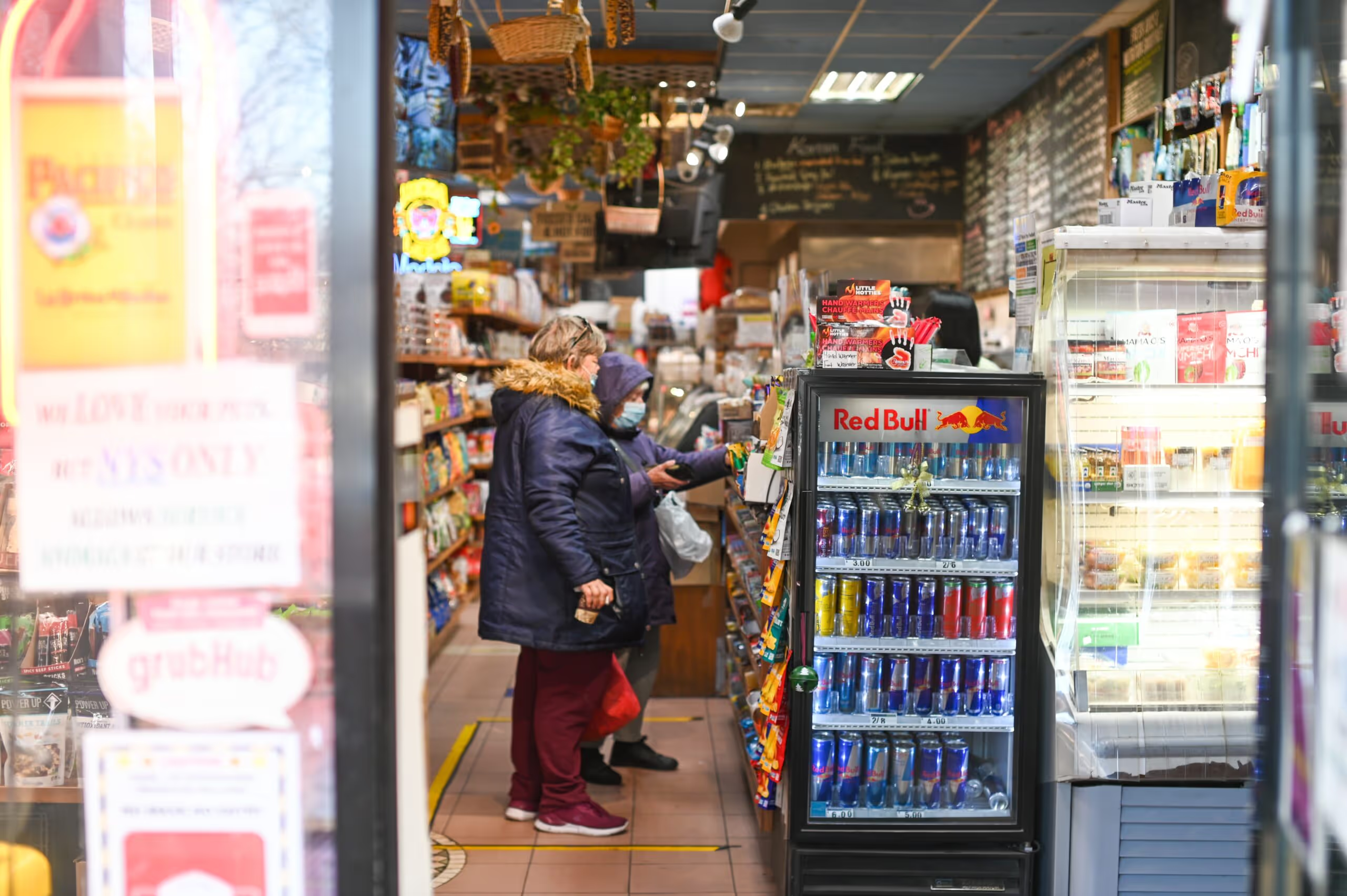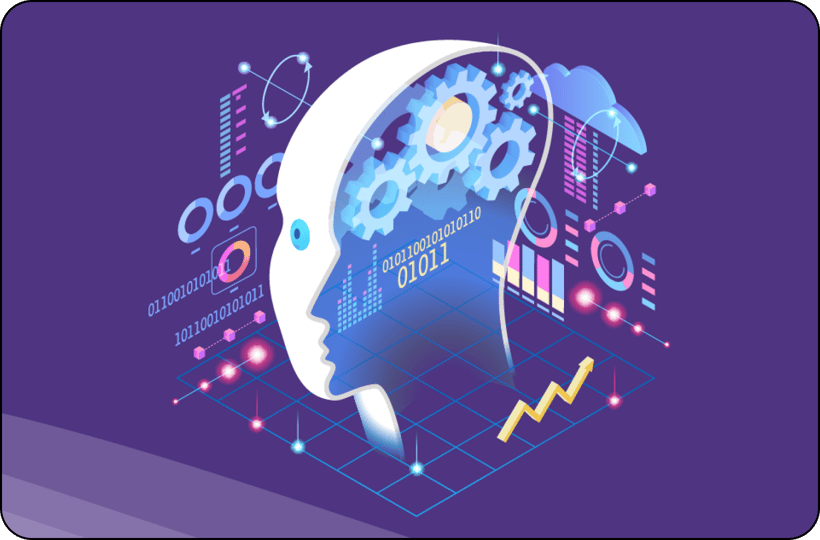Client Stories


Elevating the leadership mindset...
Client need
A leading provider of software for property and casualty insurers recognized a need to become more agile and tap into its full capabilities. To do so, the company needed an engaging way to virtually build excitement within the group, which was located remotely, while expanding its leadership skills, particularly for financial leaders.
Solution
In order to equip leaders with a mindset for success, the company’s leaders experienced the BTS Multipliers Simulation, based on Liz Wiseman’s groundbreaking book, Multipliers: How the Best Leaders Make Everyone Smarter. The program helped participants:
- Learn to “multiply” the talent and intelligence of others, applying specific mindsets and behaviors to bring out twice the intelligence of their teams despite the distance through capitalizing on individuals’ strengths.
- Avoid “Accidental Diminishers,” which are actions and words that, despite the best of intentions, lessen their team’s contributions.
- Reach their own “a-ha” moments by working through realistic and challenging scenarios, participating in rich virtual discussions, and reflecting on their own interactions and relationships in a risk-free environment.
- Visualize how the new agile culture and approach would unfold for the organization.
Results
- "[The Multipliers Simulation] was really easy for me to bring [to my team]. You are a great company to work with and the Multipliers Simulation is a real sweet spot." - Director of Learning and Organizational Development
- "We look forward to cascading Multipliers to other parts of the organization and tapping into the great stores of brainpower..."

Coaching to lead during challenging times…
Client need
A leading global FMCG snacking company was going through a large transformation, streamlining operations and rapid cost optimization. The company wanted to ensure that its key leaders felt emotionally supported to lead through difficult and changing times.
The solution...
The organization partnered with BTS on a multifaceted intervention in order to support thecompany during critical times of change.
One-to-one virtual coaching:
- Leadership team: All Senior Leadership Team members were supported by 1:1 coaching plus an internal ambassador to remain connected to the wider business.
- Leaders moving to new roles: All received coaching support to help transition to their new expanded roles.
Leaders at their Best (LATB):
- Curriculum: Virtual team coaching solution for key regional and category teams.
Creating LATB Ambassadors:
- Invited key stakeholders committed to the brand promise and the ‘leading at their best’ principles. These ambassadors helped to cascade and embed the coaching mindset throughout the organization.
Results
- 2000+ leaders received coaching, from the director level to the C-suite
- 99% of leaders would recommend the program
- 97% of leaders experienced meaningful change
Client Testimonials
- "Was very meaningful and elevated the way I lead my team through tough times."
- "The coaching sessions helped me cope and develop during an extremely challenging time."

Accelerating client business results…
Client need
Recognizing the need to develop its salespeople, an organization sought fast, high-quality training for salespeople and sales managers that was cost effective and easy to deploy. The organization needed development that would be relevant and applicable in the moment of need, enabling sellers and managers to perform in common, critical situations. They also needed something that could be delivered both by internal leaders and remotely in a group session – eliminating the need for travel.
The solution...
The organization partnered with BTS to create a solution that consisted of:
Tangible results in the field
Program participants shared results such as...
"Gained access to the CFO and successfully lay out a roadmap by obtaining mutual agreement on what the needs were and what steps it would take to bring about a solution, it brought us much closer and next steps."
Gain access to the CEO early, he will be instrumental in the funding of this project and it was always my goal to get to him early, but as a result of the training I was able to gain access in a more efficient way demonstrating credibility immediately."

Strategy alignment in preparation for a downturn...
Client need
In lieu of a potential downturn, a Fortune 200 manufacturer of scientific instruments, reagents, software and services partnered with BTS to prepare their leaders with the tools, frameworks and a playbook to anticipate, respond and thrive through a recession.
"80% of my leaders in place were not running a business in the last recession""You gave us a lot to think about and I can see my team taking this very seriously""I will to reach out to other BUs now to work together on some of our plays"
The solution...
- Aligned leaders around the right signals and analytics to monitor their business unit, function and take proactive steps.
- Helped prioritize and sequence different “recession plays,” which were refinedthrough multiple evaluations and vetted by company executives.
- Identified how to mitigate or manage risk by taking a hard look at their value chain, market dynamics, competitors, and customers to shift focus to higher priority opportunities.
- Energized leaders to take deliberate actions to leverage cross-BU strengths and get closer to customers by identifying unique elements of their value proposition, balance sheet, and product portfolio mix.
Results
- 300+ commitments shared.
- 100% participants came up with “recession plays” they had not identified before.

Leading during uncertainty
Client need
Facing challenging times within a difficult market, a recent acquisition, and quality issues, a leading consumer goods business recognized the need develop its leaders. The organization wanted to equip its leaders with the skills to manage through and out of this period of uncertainty.
"Helped me and my team rediscover our spark."
Solution
The organization partnered with BTS to create a solution that:
- Allowed every leader in the business to experience a structured 1:1 coaching program.
- Used digital and remote technology to connect leaders to an executive coach, allowing leaders to explore a set of topics.
- Covered resilience, leading in uncertainty, creating energy for change, and building momentum.
- Explored digital content prior to each session to identify best practices and key ideas, which they could then apply and personalize with their coach.
Results
- The business bounced back to meet its revenue and profit targets in the year the program was run.
- 9.4 out of 10 average rating for the quality of the coaching sessions
- 96% of participants said they changed due to the experience

Leader development at scale
Client need
A leading technology company wanted to align its 8,000 managers on leadership behaviors in the context of their own, unique business direction. The company wanted a solution that allowed them to get it all done in a single 24-hour period.
The solution
The organization partnered with BTS to create a solution that:
- Included gamified pre-work that engaged people and excited them about the event to come.
- Created an immersive experience: a “choose your own adventure” business leadership simulation in which each choice made by participating teams triggered new information and decisions.
- Combined in-person events with an equal number of people joining virtually in teams via virtual classroom technology.
- Allowed the client to facilitate the event themselves, with on-site and remote support from BTS across the five regions around the world.
- Was designed to be delivered in a completely virtual format, giving it added scalability and impact to wider audience and new situations.
Results
8,000+ leaders aligned in 24 hours.
“The pre-work and simulation platforms…amazing!”
“Our experience with BTS… is one that not only leads us to continue the relationship, but would recommend to other companies!”

Transforming the buying experience...
Client need
A world-leading oil and gas organization set out to improve its customers’ buying experience. To do so, the organization needed to make a strategic shift towards customer centricity, which would require developing its people. Leaders at the organization would need a better understanding of the company’s values and stronger negotiation skills to bring the strategy to life.
The solution...
Seeking an outside partner to provide perspective and uncover deeper issues, the company partnered with BTS to:
- Develop a customized seven-month Account Manager journey that was implemented across the globe
- Help leaders gain the knowledge, values, and negotiation skills necessary to execute the strategy, through two learning modules which included pre-work, assessments, simulation exercises and role plays
- Implement new skills back on the job, with specific actions through follow-up work three months following the experience
Results
- 40% improved conversion rate in their sales funnel
- 44M Euro increase in revenue
- "I could identify new needs and opportunities by asking the right questions and connecting a client’s value to my solution."
- "By applying all of these tools, I shortened my negotiation period and could add additional business value for my clients!"

Driving innovation...
Client need
One of the largest electronics distributors in the world needed to kick-start its innovation efforts. In the past, the company had attempted multiple innovation projects with the hope that investing in technology and running hackathons would improve business results and speed up decision making. However, these efforts were unsuccessful because they did not address innovation as a business-critical function and a customer necessity.
The solution
To develop a culture of innovation, the company partnered with BTS to develop and facilitate a portion of their leader offsite. At the program, BTS:
- Introduced five leadership moments with team workouts, each followed by a reflection
- Helped leaders define their customers’ mission, generate novel ideas, share their thinking with the group, and think critically about their assumptions
- Provided a playbook, or detailed action plan, to support the culture shift and align language
- Facilitated collaboration, as teams of leaders worked together to build a pipeline of ideas
Results
- "You demystified innovation as something that is customer relevant, a commercial function, and not just new, fancy technology." - Chairman of the Board
- 500+ ideas collected, £100M+ in anticipated revenue from the first 7 ideas piloted
- The initial launch of one product is projected to contribute £30M in revenue and £9M in profit

Bringing values to life...
Client needAn international consumer goods company set out to increase performance and create a more meaningful work experience for employees. Following a significant business shift, the company’s executive team identified the need to better define their purpose and values, and bring them to life for employees. This would require a culture shift, which would better enable strategy execution and employee engagement.The solution...
- Engage to understand – a process of engaging the organization to understand the existing lived culture and the aspirational shifts that would make the biggest impact
- Top leadership journey – an individual behavioral gap analysis, leading culture workshop, action commitments and peer accountability communities for the top 250 leaders
- Cascade and toolkit – operationalizing culture through mid-level and frontline engagement, with toolkits to enable the culture conversation in the normal flow of work
ResultsA 35-39% increase reported by company leaders in their levels of alignment and capability to live and lead the values that shape their cultureThe top 250 leaders reported the following:
- Boost in team morale
- Better relationships and cohesion
- Greater openness, respect and awareness of diverse cultures
- Operating as one team rather than direct responsibility only
- Increased alignment between stakeholders and empathy for challenges
Culture work significantly contributed to the company being recognized as an Employer of Choice by the Top Employers Institute shortly after the engagement.

Supercharge your storytelling
Client need
Senior leadership at one of the world’s largest cloud-based software companies realized that their finance team was not communicating data in a way that could be understood by those outside of the team. The company’s financial leaders needed to improve their ability to turn critical information into a compelling story that their business partners could comprehend.
The solution...
To remedy the issue, the company partnered with BTS to co-create a customized Practice with an Expert solution. The solution was designed to ensure meaningful and lasting behavior change through a tailored experience that would be co-facilitated by subject matter experts with PhDs in Communications and Rhetoric. The journey includes:
- Learning assets with practice opportunities
- A set of short videos that teach the importance of messaging and crafting a narrative
- One-on-one virtual sessions with experts to put the newly learned skills to the test
The Storytelling course objectives...
… are centered on the assumption that business partners are more likely to accept data with the right messaging. Storytelling techniques help financial leaders to:
- Tell compelling virtual stories with data
- Engage the audience
- Persuade the audience to take action

Practice with an Expert: Supercharge your storytelling
Client need
These financial leaders needed to improve how they converted critical information into a compelling story for their business partners to comprehend. To remedy this issue, the company partnered with BTS to co-create a customized Practice with an Expert solution, ensuring meaningful and lasting behavior change with a tailored experience co-facilitated by Communication subject matter experts with PhDs in Communications and Rhetoric.
For additional expertise, BTS invited a communication consulting firm to partner in developing and delivering the solution. In collaboration, the three companies began building the solution by discussing communication, storytelling, and how to build those skills in an innovative and effective manner. The standard way of learning effective communication is typically presentation-focused, only measuring the audience’s reactions to the meaning of a speech delivered. However, BTS’ solution was designed with a specific rubric that included behavior-based criteria that can be observed and evaluated in an objective way. By focusing on concrete indicators, participants are left with actionable goals based on the behaviors they need to change to become more effective communicators.
Solution
A storytelling journey: communicating effectively
When communicating complex information to other teams, the software company’s financial leaders often struggled with an over reliance on data, making it difficult for key stakeholders to understand. The solution, a Storytelling Journey, was therefore designed to help financial experts transform data into a story-like narrative with a clear message. The journey couples learning assets with practice opportunities, involving a set of short videos that teach the importance of messaging and crafting a narrative, as well as one-on-one virtual sessions with experts to put the newly learned skills to the test. Consistent with BTS’ belief in "learning by doing," this multi-faceted approach is one of the most effective learning methods as it combines both self-paced learning and individually-tailored practice opportunities.
Every year, two cohorts of 30 finance professionals at the software company experience the journey, developing their communication skills to become effective storytellers. The Storytelling course objectives are centered on the assumption that business partners are more likely to accept data with the right messaging. Therefore, storytelling techniques help financial leaders:
- Tell compelling virtual stories with data
- Engage the audience
- Persuade the audience to take action
The journey begins with financial leaders reviewing a series of animated video vignettes and practice exercises, designed by BTS, that present communication strategies and tactics, including the importance of choosing the right kind of messaging given what they are communicating and to whom. The videos enable participants to craft an overarching narrative using an understanding of their audience, while also incorporating key data points they need to convey using persuasive language. After completing the videos, participants practice the new skills gained from the videos by engaging in two role play exercises with a communication expert.
The first role play requires participants to understand the needs of a broad audience and make a persuasive case in a presentation format. The participants take two to three hours to create their presentation using data from real-life scenarios they face on-the-job. They then practice delivering this presentation to a communication expert playing the audience. Thus, participants get to experiment and practice communication skills in a risk-free, one-on-one environment. They deliver the presentation over a video-call and the expert evaluates them according to four skillsets: whether they used storytelling techniques, shaped an actionable story, effectively presented data, and applied varied speech elements. The experts then provide on-the-spot feedback on what was effective and what was less effective during the presentation delivery.
In the second role play, the expert plays a senior audience member who asks to follow up after the presentation to ask questions. This exercise requires participants to form a more personal connection to the individual asking the questions, testing their ability to listen and flex their communication skills to the needs of this individual. The presenter is trying to persuade the ‘senior member’ to buy into various points of their presentation. They are trying to convey these points using storytelling, and the skills they learned from the videos, which includes being conscious of the message they are trying to develop as well as how they may be perceived by colleagues.
These two exercises, a formal presentation and a question and answer scenario, ensure participants get a chance to practice two forms of communication, tailoring their language to the setting and needs of different audiences. To ensure long-term learning, each participant’s role play is recorded and watched by assessors who embed their comments into the video, so when participants view the video, they can read the feedback as they watch their behavior. The participant thereby receives real-time and relevant feedback from the evaluation, and is able to learn from each experience.
Results
After this experience, participants are set up with “Go-Do” activities, where they are held accountable for applying learned skills back on the job. As part of confirming that participants make progress towards their “Go-Do” goals, participants receive email check-in notifications and reminders for a defined period of time following the program, at a rate that ensures real actions back on the job. BTS’ “Act@bts platform serves as a hassle-free accountability and follow-up resource to log, track, and measure these Go-Do actions and the goals each participant wants to achieve following the program. This tool further cements that these behavior changes will be maintained in the future.
The Storytelling journey and follow-up Go-Dos proved to be extremely successful, with participants, the company’s financial leaders, reporting significant improvements in all four skillset areas.
Client testimonials
“I think many of us are taught to explain and then deliver our big idea, but this was useful in really highlighting why you start with your big idea.”
“I talked less about the financials and more about the strategy decision-making, my story-telling and passion came alive. I think when discussing the financials, I am going to make it more storytelling and less about the weeds to engage the audience, especially if it’s a non-finance executive audience.”

Experiencing great for corporate banking...
Client need
A leading Chinese bank needed to build customer centricity and enhance collaboration among the different roles of the team. With 300 corporate banking Relationship Managers performing below the average company standard, the bank partnered with BTS in order to equip its leaders with tools and modules to develop critical skills for interacting with clients.
Solution
The bank partnered with BTS to design a comprehensive learning and development program. In order to help the company achieve its desired outcomes, BTS...
- Developed a playbook pinpointing the behaviors, mindsets, and critical leader actions that would set “great” leaders apart from “not-so-great” leaders in team interactions
- Created a scenario simulation and roleplays for leaders to experience the desired behaviors
- Designed a customized “Sales Accelerator” series to improve customer interactions
Provided every participant with “Go-Do” actions that served as accountability mechanisms to ensure long-term learning
Results
Year-over-year growth for participating branches:
- 14% increase in loans
- 44% increase in profit
- 75% increase in middle income
Delivered six times in a year, touching 631 people from 25 branches at the bank.

Leveraging ExPI™ Certification In-House
Challenge:
Traci Schrah is the Director of Talent Management for the West Division of Comcast, which represents over 20,000 employees. She sets the strategy for talent development: identifying high potentials, making the right investments, determining the ROI, addressing gaps in succession planning, and linking all of that activity back to talent discussions for high potentials. In her role developing leaders, she saw the need for a common language about executive presence to enable more valuable talent discussions and more tangible ways to bridge the gaps.
Solution:
Traci earned her Bates ExPITM Certification in 2017 so that she could leverage the ExPITM as a key element in Comcast talent development tool kit.
Experience and Outcomes:
We asked her some questions about her experience in becoming certified and what’s happened since then.What did you see as the value of going through the ExPI Certification program, including working with a partner to practice the process?“Going through Certification gave me more in-depth knowledge of the model and how you walk someone through it all. One thing that Bates has done for our program at Comcast is that it has given us a common language around executive presence that didn't exist before. Now we can have tangible discussions about building awareness and bridging the gaps.
In the Certification Program, I loved getting paired up with a partner to practice. From that, I learned about connecting the dots between facets, and I learned how to not lead the witness. Also, learning how to create a good flow in an insights meeting was invaluable. I got the Certification and then quickly was able to use the skills and help others get insights from their own ExPIs.”Give me an example of a story of a leader who has gone through the ExPITM with you as their coach: What were some insights that you arrived at through use of the report and the process?“One in particular was around the concepts of over-strengths—the idea that you can have too much of any facet in the model. This was really interesting with one leader. I think she had Resonance as an over-strength, maybe Humility, too. What we saw was that the leader wanted so much to be liked that it was impacting her in other ways. Her Assertiveness was low, and people wanted to hear more from her. These over-strengths also affected her prioritization. She was taking on too many things and stretching herself too thin. I said to her, ‘You’re doing really well when it comes to demonstrating Resonance and Humility... Is there a chance you're doing this too well?’ Then we talked about what triggers her to do that and what she could do differently.”What have you seen as the business impact of the ExPITM for leaders who have undergone the process with you? “
When I coached our Senior Leadership Team leaders in one of our regions, that's where I saw the biggest impact. A lot of them had their lowest scores from their Peer raters. This makes sense as they’ve had team members come in and out, but it helped them to realize that they’re not gelling as a leadership team. This got them focused on how that impacts their ability to lead in their region. We haven't seen the full impact yet of that work because we went through that just a few months ago, but we're going to see more impact from this assessment going forward.”What were some insights you picked up about yourself by going through your own report with your coach on your original insights call?"One of the biggest aha moments was with the facet of Inclusiveness. One thing I noticed about myself when I discussed it with my coach is that I like to jump in and give my opinion first on things, and that may keep others from wanting to contribute. Once you’ve said what you believe to be true, it may make other reluctant to share their views. I’ve passed what I learn on to my team. I say to them, ‘Open it up first with inquiry and create an environment where others can speak up.’”

Culture change at a leading pharmaceutical company…
Client need
With a faltering Research and Development output, a multinational pharmaceutical company appointed a new leader to turn around the function’s performance. The organization needed to transform its culture to take smarter risks, make better decisions, and develop outstanding people. Though they took significant steps to improve their science and technology, there was still a disconnect between employees and the organization’s purpose.
The solution...
BTS partnered with the organization’s Research and Development team leaders to create a self-sustaining cultural transformation. It involved:
- A 2.5 day off-site to bring the culture pillars to life in an experiential manner for the top 400 leaders
- A virtual cascade tool so that leaders attending the off-site could cascade the experience with their teams
- Impact measurement assessed with ACT@BTS as well as the organization’s own employee surveys to evaluate long term results - a true collaboration between BTS and the organization
Results
- 4000 people within the organization have been exposed to the message through the cascade tool
- 90% of leaders are changing their behavior by communicating and exploring the new culture with their teams
- 58% of leaders are acting upon the culture pillars
- 12 percentage points: Leaders attending the conference report being 12 percentage points more engaged than a control group of their peers
"We need to focus on culture as a multiplier, if we don’t tip the culture piece it will be terrific science x terrific technology x zero [culture] and that will not be a good number."
- Head of Research and Development

Developing a strategic vision at Gestamp
Client need
Identifying the need for stronger strategic vision and better financial acumen among leaders, Gestamp embarked on a journey to develop its Plant Managers and Industrial Directors.The organization partnered with BTS to bring their culture shift to life.
The solution...
A two-day workshop where Industrial Directors experienced leading the business and practiced financial acumen through a manufacturing simulation modeled directly after Gestamp.A second 3-day, a fully-customized simulation that allowed Plant Managers to make decisions as if in real life, while improving their business acumen and financial understanding.Through the ACT@BTS platform, participants receive follow up that ensures their accountability for integrating their learning back on the job.
Results
128 commitments to behavior change back on the job, which led to...
- Decrease in raw material consumption from €45k to €25k
- Decreased in finished inventory by 24%
- Increased machine efficiency by 5%

Driving alignment for enterprise execution
Client need
To align leaders with the new company strategy and cultural principles, a leading American chemical manufacturer partnered with BTS to co-create a simulation-based experience to help leaders develop an enterprise view, gain clarity on financial objectives, and practice communicating and cascading enterprise priorities to their teams.
The solution
BTS designed a 3-day offsite, including a customized simulation intended to:
- Drive alignment to new enterprise strategy priorities
- Foster cross-geography collaboration, promoting ownership and a growth focused mindset
- Help leaders understand how their division and teams play into the company’s vision and top priorities
Results
- 215 unique actions of which 54% are complete or on-track
- Results reported include...
- 3 - 10% in price increases on select products, improving gross margin
- $500K of synergies in cost reductions, due to leveraging best practices across teams

"Lead the Leap" to an integrated safety culture
Client need
Recognizing the need to create an integrated safety culture, a leading European energy company embarked on a journey to build awareness and find new ways of approaching safety related issues. To make this shift, the organization’s leaders needed to know and understand how to apply behaviors and tools that would create a sense of individual responsibility towards safety at all levels. Leaders also needed to commit to bringing safety as a priority into their leadership roles.
“I’ve realized the impact my communication has on how employees perceive safety and how to be more effective at communicating.”
- Company CEO
The solution...
The organization partnered with BTS to create a solution that would bring this transformation to life. To cultivate a safety mindset, the program helped leaders to:
- Gain awareness that the current approach to safety was not enough, and encourage individuals at all levels to assume more responsibility
- Understand the mental barriers that subconsciously prevented leaders from making the leap towards an integrated safety culture and how to avoid them
- Identify and understand how to apply the leadership behaviors and tools that will boost the company’s safety culture
Results
- 95% of leaders increased their perception of everyday risks
- 93% of leaders are integrating safety risk assessments into decision making
- 96% of leaders improved their team’s commitment to safety
- 29% reduction in the number of fatalities, injuries with lost work days, medical treatment and restricted work

Driving a safety culture
Client need
Despite six years of improvement, an international oil and gas corporation recognized the need for a global culture transformation towards safety. After a few serious incidents that reduced the company’s Process Safety Events Rate (PSER), the organization set a goal to become the industry leader in terms of health, safety, and the environment.
The solution
Focused on driving behavioral change to improve the culture around safety, the company partnered with BTS to create a comprehensive leadership development program. This program would reach leaders at all levels, from top managers to field workers by:
- Aligning leaders to the company’s current safety situation and generating the feeling that change is necessary to achieve a culture of safety
- Understanding the mindset and behaviors that will help move the safety culture forward
- Getting to know the tools that will help them put the safety behaviors into practice during their day-to-day
- Increasing leaders’ field presence, improving the quality of safety walks and closing the gap between managers and field operators
Results
- 75% improvement in safety culture
- 68% reduction in unsafe behaviors
- 61% reduction of process safety incidents (fires, explosions...)
- 83% improvement in communication and transparency on HSE matters
- 140% more safety walks conducted
“BTS has undoubtedly given a boost to our Safety Culture.” - Global Health, Safety, Environmental (HSE) Manager

Becoming client-centric
Client need
One of the largest Mexican financial institutions wanted to improve its sales through building stronger relationships with clients. This meant shifting from a product-focused to a customer-focused mindset. To do so, the company recognized the need to increase its focus on Net Promoter Score (NPS), cross-selling, and market penetration. Bankers needed to be able to manage and prioritize their pipeline of current and new clients, and bring value to every interaction.
The solution...
The bank partnered with BTS to co-create a two-day program addressing their Sales Representatives, and a three-day solution for their Directors. Both programs focused on improving proactivity in prospecting, generating sales cadence, and moving towards a more client-centric mindset.
- During the workshop, the salespeople experienced a simulation that had them manage five different clients and their pipeline, which helped them align their actions to what clients needed at different moments.
- After the workshop, participants completed a series of follow-up activities to practice prospecting, improving client interactions and closing sales.
Results
- 29% increase in prospects for bankers who attended the program, compared to those who did not attend
- 30% increase in closed opportunities for bankers who attended the program versus those who did not attend

A new commercial model...
Client need
Shifting to become a formalized financial institution, a commercial bank in Mexico began to increase its offerings. Adding a deposit service to its existing loan business, the company’s headcount doubled. As a result, the organization recognized that it needed to define a new management model for its people. The bank set out to create alignment, gain buy-in around the new structure and ways of working, as well as develop its people’s leadership skills.
The solution...
In order to successfully transition to a new model, the bank partnered with BTS to co-create a solution that would…
Results
- 21% increase in bank deposits...
- 16% increase in loans...
- All branches that experienced the initial BTS program achieved stronger growth in new accounts and income
- The success of the initial program led to company-wide rollout in the 1,700 remaining branches

The key to quality customer-centricity? Data.
Anticipation is often at the core of customer-centricity. Companies that utilize a customer-centric strategy can often predict every want, need, and possible passing fancy of their target audience — and find themselves handsomely rewarded in the process. Putting the customer front and center, even above revenue, can make a company 60% more profitable. Not a bad proposition for taking great care of one of an operation’s most essential assets.Of course, claiming to be customer-centric is a far cry from actually being customer-centric. Companies that deploy a successful customer-centric strategy often use a different method of thinking to achieve their results: the “who-what-why” scale. Using these three W’s, every employee can better understand the customer beyond basic demographics. A deeper understanding then helps inform nearly every decision, shapes the experience across all possible touchpoints, and allows for more thoughtful and meaningful targeting.With this method, employees make customers feel seen and heard. Customers see the company they chose to put their trust in actively meeting their wants and needs. Such basic services can do wonders for brand loyalty and brand advocacy. It can also encourage consumers to devote a larger share of their wallets — around 3% to 20% more.In a fast-paced society, businesses must always look for the most beneficial way to appeal to customers and retain loyalty. A customer-centric strategy is the first step, though a deeper understanding of the customer’s wants, needs, and communication preferences is necessary for tangible results. This begs the question: How exactly do you come to a deeper understanding of a target audience?Understanding a target audienceBusinesses often use four specific methods to capture consumer insights and better anticipate customers’ wants and needs. The first is naturalistic observation, which monitors people’s interactions with the world. These findings can offer insights into how a target audience might try to fulfill a unique want or need. The second is customer surveys that allow organizations to gather valuable feedback. The third is focus groups, which involve customers discussing products or services.Big data is the fourth strategy. Unlike the others, this method is where companies are currently experiencing the most change. Cloud computing has led to reimagining customer insight-oriented activities such as customer service analytics, brand experience, social media marketing, and voice of the customer tools.New options and systems can easily overwhelm anyone looking for the right data to track for customer-centricity. Starting with a limited number of metrics and expanding from there can save you time, money, and hassle. Here’s where to direct your attention first:
1. Brand experience
Tracking brand experience can help capture consumer sentiment about your brand. It gives you a better idea of what people think and feel about your services. If done well, brand experience tracking can shine a light on which of your brand initiatives do or do not work, allowing you to pivot your efforts quickly. Both your net promoter and customer satisfaction scores can help crystalize what consumers might be saying and thinking about your brand.Surveys can also be a great source of information. Keep questions to a minimum and targeted to encourage more thorough participation. Additionally, make sure not to bombard consumers with questionnaires. Quarterly can be a good frequency to capture such sentiments. Understanding your consumers’ mindsets encourages them to trust your brand and keep coming back for more.
2. Customer experience
Customer experience, or CX, tracking involves understanding the different dimensions of customer delight, including emotional and rational reactions to a company’s offerings. It also provides insights into the customer’s inclination to repurchase, recommend, or reject a product or service in the future.Using certain data sets, particularly those associated with customer interactions, transactions, and profiles, you can arrive at what McKinsey & Company is calling “predictive insight.” This can help shape CX moving forward. All it takes is machine-learning algorithms to make sense of the information and direct funds toward certain touchpoints most likely to drive behavior along the customer journey.
3. Employee alignment
In a customer-centric organization, every person shares the goal of creating a great CX — from the C-Suite to front-line associates. Tracking and measuring employee alignment, or EA, will give you a better idea of how well each team member understands customers and, more importantly, believes that understanding and fulfilling customer needs are pivotal to the company’s success and their own.EA starts with a sense of camaraderie and belonging. A Deloitte survey found that 79% of employees tend to agree. What’s more, 93% believe it to be a factor that drives organizational performance. When employees can see a common goal, they are more likely to achieve it for the success of everyone involved.As with any customer-related initiative, it all comes down to the data. The most important steps are to monitor customer sentiment and understand where your company might fall within their purchase decisions. Just appreciate that one wrong move can leave people seeking alternatives to your services. Customers want what they want when they want it. By focusing on a client-centric business strategy, you can ensure they get it and keep coming back for more.

